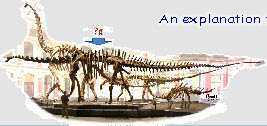


The start of the year saw the publication of a new paper about Earth expansion from Alexey Ju. Retejum, Moscow State University. The Expanding Earth: Indisputable Evidences of the Gobi Desert, published in the Open Journal of Geology, discussed the striking contrasts between actual continental temperatures at the end of the Mesozoic and the temperatures predicted by conventional reconstructions. These problems disappeared once Earth expansion concepts were used. The giant animals of the time would also be difficult to explain unless gravity was lower.
One of the main remits of the Gravity Research Foundation is to encourage research into gravity. They promote this research by offering small annual awards for essays on gravity and also publish a dozen or so of these articles in a special International Journal of Modern Physics publication. Any evidence of a change in the Earth’s surface gravity over time should be of special interest to this foundation.
Physicists agree that a change in gravity would affect the scale of life. Look at what Brian Cox, a British Professor of Physics and Public Engagement in Science, said in his 2013 book Wonders of Life:
An even greater dichotomy between unreasoning belief and science is seen concerning the belief that the Earth has remained the same size since the dinosaurs’ time. The geological evidence shows that the Earth has gradually increased in size over geological time. Numerous scientists have written articles and books presenting the evidence for Earth expansion. Several books presenting the evidence in great scientific detail have been published in the last decade. More recently the Polish geologist Jan Koziar published his book, Geological Proofs of Significant Expansion of the Earth and its broader scientific context. Seven geological proofs of significant expansion of the Earth were presented in this book, each of them is a proof of the fallacy of the basic and unproven assumption that the Earth is not expanding. James Maxlow, the Australian geologist, also published his book, Beyond Plate Tectonics - Unsettling settled science. This explained that science is never settled. New revolutionary ideas have always overturned the settled sciences of the past. In this far–reaching book the author looked beyond plate tectonics in order to detail the next earth science revolution.
Despite this most people continue to simply ignore the evidence. They prefer to believe that the Earth has remained the same size since its formation over 4.5 billion years ago.
Last year, I suggested to several of the leading researchers in Earth expansion that a book aimed at a more general readership might help shake this belief in a non-expanding Earth. Perhaps a book concentrating more on the history of Earth expansion might introduce more people to the vast amount of research available. So I spent some time editing a book about the history of Earth expansion. It consisted of chapters by several authors to give us a unique insight about working at the very forefront of this innovative research. The Hidden History of Earth Expansion: Told by researchers creating a Modern Theory of the Earth had chapters by: Hugh G. Owen, Cliff Ollier, Karl-Heinz Jacob, James Maxlow, Jan Koziar, Stefan Cwojdziñski, Carl Strutinski, John B. Eichler, William C. Erickson, David Noel, Zahid A. Khan and Ram Chandra Tewari, Vedat Shehu and Richard Guy. The book was published on the 14 May 2020 and is widely available at all good bookshops worldwide.
The NCGT Journal was one of the first to mention “The Hidden History of Earth Expansion” in the May 2020 edition of their journal. The journal has published many papers about Earth expansion over the years. As they state on their web site, "What is today's contrarian science, may become tomorrow's established science." The editor, Louis A. G. Hissink, reviewed the new book for the August 2020 edition of the journal.
Many of you sent me photos of the book in various places around the world. I love seeing all the photos so keep them coming!
Share this page
Earth expansion book
I had arranged to attend the Polish Geological Congress at Poznań in June to give a presentation about palaeogravity. I was looking forward to meeting up with Jan Koziar and Stefan Cwojdziñski who had also planned to give lectures related to Earth expansion at the congress. Unfortunately the pandemic meant the congress had to be cancelled. At the moment it is hoped that it can be held during 2021. Since the Coronavirus Pandemic meant my talk was not presented at the congress I placed a version of it on YouTube.
The Italian geologist Paolo Sudiro has started to become a typical vocal opponent of Earth expansion in the past few years. However, the whole of his first paper in 2014 was riddled with many clear errors about various researchers. This prompted many of them to complain to him. It seems to have little effect and he has continued his own personal vendetta against anyone who dared to research Earth expansion.
In a reply to a number of Sudiro’s publications Scalera (2020a, 2020b) very clearly clarified his own ideas about Earth expansion. The corrections contained in these papers were completely ignored by Sudiro who launched a very personal attack with a poster entitled, What’s wrong with Scalera (2020): an essential graphical abstract. The poster once again demonstrated Sudiro’s complete lack of understanding about Earth expansion. In one panel of his new poster Sudiro complains that Scalera’s expanding Earth reconstructions show the North American continent has the “same shape and size” before and after expansion. Sudiro seems to be unaware that one of the main premises of modern Earth expansion is that the continents have remained more or less the same size while the Earth’s mantle has expanded. In another panel Sudiro shows a graph entitled, Misunderstanding scales and math. He then extends a line labelled Scalera (2020) as a straight line, so the diameter of the Earth is zero at about 400 million years, and adds the comment, “Oops! Is the planet disappearing?” It would seem that Sudiro has also missed the essential point that Earth expansion is exponential so the line wouldn’t intersect where Sudiro shows it. In his book, Geological Proofs of Significant Expansion of the Earth, Koziar (2018) perhaps summarised the thoughts of many of us by describing the “whole of [Sudiro’s first] paper to be pseudo-scientific propaganda against the expanding Earth rather than a scientific work”.
One positive advantage to the pandemic was my introduction to Zoom conferencing. This proved to be so effective that I decided to set up a Short Lecture Series. I started with my Can we calculate palaeogravity? lecture just to ensure it worked. Later lectures have included: James Maxlow, John Eichler and Vedat Shehu so far. I’m hopeful this series will continue into the New Year. If you’ve not seen the lectures you can catch up with some of them on the Youtube links.
Meanwhile, over in America, the John Chappell Natutal Philosophy Society continued to support Earth expansion. The web site was updated and a new group was created for those interested in expansion tectonics. I was interviewed about the: New Earth Expansion Book: Live Interview with author Stephen Hurrell. If you missed the program you can see it on YouTube. David de Histler has also interviewed James Maxlow and John Eichler later in the year. Once again, the programs are all available on the John Chappell Natural Philosophy YouTube channel.
Scientists are constantly making discoveries that don’t fit the concept of Plate Tectonics. Strangely most don’t recognise that this is because Plate Tectonics is wrong (or rather the fundamental premise that it is based on - a constant diameter Earth is wrong). This year scientists discovered that duckbilled dinosaurs migrated from Euroasia to Africa. This is a problem because Eurasia wasn’t connected to Africa according to Plate Tectonic reconstructions - there was a deep ocean between the two continents. The ad hoc suggestion to overcome this problem was that the duckbilled dinosaurs swam the ocean!
Duckbill dinosaurs would need to swim from Eurasia to Africa according to Plate Tectonic reconstructions, BUT Expansion Tectonic reconstructions show that Eurasia was connected to Africa by land, allowing migration. There is no problem once it is recognised that Eurasia and Africa were connected at the time.
The same problem with migration has been highlighted before for different continents. Dennis McCarthy found land connections across the Pacific in his paper, The trans-Pacific zipper effect: disjunct sister taxa and matching geological outlines that link the Pacific margins. Also the two Indian geologists Khan, & Tewari wrote a number of recent papers demonstrating how India must have been connected to Eurasia - The facts and fictions of the Oceanic Tethys concept and Chaman-Nal Fault and India Asia Suture were just two of them.
These papers all make the same essential point - all the problems with Plate Tectonics disappear once we accept that the Earth was smaller in the past.
The Palaeontological Association hold an Annual General Meeting with presentations of the latest research into ancient life. The meeting was supposed to be a four day event held at Manchester but Covid-19 stopped all that and it changed into three day virtual event.
I still put a poster together for the meeting. It was about Quetzalcoatlus northropi, a gigantic pterosaur. Its wingspan of 10-11 metres was the size of a small plane. It would have stood as tall as a giraffe. Recent estimates have calculated its mass at about 250kg (1/4 ton). How could such a massive animal fly in our gravity?
The envisaged flying ability of the gigantic Quetzalcoatlus northropi pterosaur has produced ongoing debate since its first discovery, mainly because aeronautical calculations show it is too large to produce continuous powered flight in our gravity.
Colin Pennycuick was a leading authority on the mechanics of animals’ flight. He outlined the aeronautical problem with pterosaur flight for many years, repeating it again in his last 2015 book, Birds never get lost.
"Among living species, the big birds that can flap well get up to masses of 12 kg, or occasionally to 16 kg, with obvious difficulties in finding enough power to fly.
“That raises problems, because through the second half of the Cretaceous, there was a wide range of pterosaurs that had wing spans of 5 m and up, against 3 m for modern birds.
“These end-Cretaceous giants were far bigger than giant swans, and there is no way in which they could have flown by flapping flight, under today’s strength of gravity. [Pennycuick, C., & Pennycuick, S. (2015) p 53]
I quantified the flying ability of Quetzalcoatlus northropi in a reduced gravity of 0.62g. These aeronautical calculations show it was capable of producing continuous powered flight in this reduced gravity, allowing its flying ability to be comparable with the largest flying animals of today.
I must say the virtual event was very enjoyable with many fascinating details of the latest research. If you want to see my poster and the article it was based on you will find a copy of both of them here.
Well, that’s been my highlights of 2020 but why don’t you let me know your own highlights or any comments on the Facebook page.
I hope you’ve all enjoyed Xmas as much as possible in these strange times and I wish you all the best for the New Year.
References
Cox, B. (2013). Wonders of Life On Amazon
Hurrell, S. (2020 - editor). The Hidden History of Earth Expansion: Told by researchers creating a Modern Theory of the Earth. Publisher details
Hurrell, S.W. (2020). Presentation: Can we calculate Palaeogravity? Abstract
Hurrell, S.W. (2020). Can we calculate Palaeogravity? pdf
Hurrell, S.W. (2020). The flying ability of the pterosaur Quetzalcoatlus northropi in a reduced gravity. pdf
Khan, Z. A., & Tewari, R.C. (2016). The facts and fictions of the Oceanic Tethys concept. SCIREA Journal of Geosciences. Free pdf
Khan, Z. A., & Tewari, R. C. (2018). Chaman-Nal Fault and India Asia Suture. Publisher: Lambert Academic Publishing. ISBN: 978-613-9-89545-8. Free pdf
Koziar, J. (2019). Geological Proofs of Significant Expansion of the Earth and its broader scientific context. Free pdf
Maxlow, J. (2018). Beyond Plate Tectonics - Unsettling settled science. Google Books
McCarthy, D. (2003). The trans-Pacific zipper effect: disjunct sister taxa and matching geological outlines that link the Pacific margins. Journal of Biogeography, 30(10), 1545-1561. Abstract
McCarthy, D. (2005). Biogeographical and geological evidence for a smaller, completely enclosed Pacific Basin in the Late Cretaceous. Journal of Biogeography, 32(12), 2161-2177. Abstract
Pennycuick, C. (2015). Birds never get lost. On Amazon
Retejum, A. J. (2020). The Expanding Earth: Indisputable Evidences of the Gobi Desert. Open Journal of Geology, 10(01), 1. DOI: 10.4236/ojg.2020.101001. pdf
Scalera, G. (2020). Ai sudari di Sudiro, una garbata risposta. (To the shrouds of Sudiro, a polite reply) pdf
Scalera, G. (2020). An Expanding Earth - A reply to two recent denial papers. Rendiconti online della Società Geologica Italiana. pdf
Sudiro, P. (2014). The Earth expansion theory and its transition from scientific hypothesis to pseudoscientific belief. History of Geo-and Space Sciences, 5(1), 135. pdf
Sudiro, P. (2020). What’s wrong with Scalera (2020): an essential graphical abstract. Pdf
Page first created 15 Jan 2021
Page last updated 06 Dec 2024









